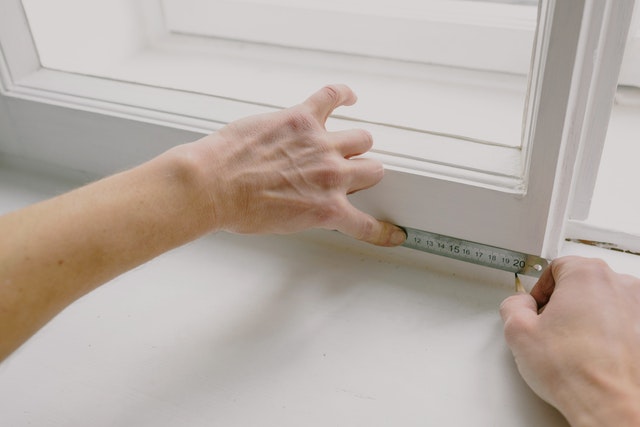Professional Drywall Repair in Aurora, CO
Repairing Screening
This is an excerpt from the Book called “Step-By-Step Household Repairs“. Continue reading to learn more about Repairing Screening, thanks to the author.
Holes and tears in screens are among the most put-off repairs around most homes. That’s probably because they’re not as urgent as a leaky faucet or a binding door or some of the other must-do repair jobs. But you can only procrastinate so long because eventually you won’t be able to get fresh air in the house without allowing a horde of pesky flies or mosquitoes in with it.
So if you have one or more screens in need of attention, there’s no better time than now to take corrective action. On this and the next two pages, we show you how to repair both small tears and gaping holes in screening as well as how to replace screening in both wood and metal frames.

The tools and materials for screen work are, with a few exceptions, as common home workshop tools as you can find. For mending, you’ll need silicone glue or tin snips and a small amount of aluminum or fiber glass. To replace a wood-framed screen, you’ll need a putty knife, a screw-driver, a staple gun, some scrap wood strips for stretching the replacement screening, a hammer and brads, and a utility knife. For work on metal sashes, you also may need a length of replacement plastic spline. To make screening replacement work easier still, consider investing in a special screening tool.
Mending Small Holes
- Very small tears in metal or fiber-glass screening respond well to mending with clear silicone glue. If necessary, dab it on in successive layers until the tear is completely filled.
You can “dam” small holes in metal screening. Unravel a strand or two from a piece of scrap screening and sew the hole shut, weaving the strands into the sound fabric with a needle.
Patching Large Holes
- To repair large holes in metal screening, start by neatly trimming the damage to a ravel-free square or rectangle using tin snips. Now cut a piece of patch screening that is about two inches larger (overall) than the damaged area.
Unravel a couple of the patch’s strands on each side and bend them over at a 90-degree angle. Position the patch over the bent wires through the sound fabric. Then bend the wires over to hold the patch in place.
The technique is even simpler for fiber-glass screening. Cut a patch of similar material with scissors and affix it with transparent-silicone glue.
Replacing Wood-Framed Screening
- To remove the damaged screening from the frame. Pry up on the wood molding strips with a putty knife. Start with the frame’s center rail, if it has one and work from the centers of the stripe to their edges. Now remove all of the staples you have exposed and lift out the screening.


To cut your replacement screening to the correct size, unroll a length of it and a cut of piece that is several inches wider and at least a foot longer than the frame. Fold over the top edge of the screening about ½ inch and staple this hemmed double layer as shown here, working from the center to the edges.
- Before stapling the remaining edges of the screening in place, you’ll need to make an improvised “stretcher” from a pair of 1x2s. Nail the bottom 1×2 to the floor or a bench, then position the bottom of the frame an inch or two away from the 1×2, with the excess screen lying over it. Now nail the second 1×2 a top the first so the screening is sandwiched between them.
- Insert two wedges (made by cutting a 1×4 diagonally) between the 1×2 cleats and the bottom of the frame. Now tap the wedges with a hammer until the screening becomes taut. (Tap the wedges gently, alternating sides and being careful to avoid overstretching the screening).
- Now staple the bottom edge in place, followed by the sides (pull on the fabric to tighten it before stapling), and finally the center rail, if there is one. Again, begin stapling at the centers, and smooth the mesh as you work out toward the edges.
Finish the installation by trimming away the excess from the frame sides and bottom with a utility knife. Refit the screen molding with countersunk brads. Fill the recesses with wood filler.
Replacing Metal-Framed Screening
- Unlike screens in wood frames, metal-framed screens are held in place by a spline that’s friction-fit into a channel around the perimeter of the frame. Removing a damaged screen is simply a matter of prying loose this spline with the blade of a screwdriver.
- Cut your replacement screen to the same size as the frame’s outer dimensions, trimming the corners at 45-degree angles (to make them easier to tuck in). Now use a putty knife to bend an edge of the screen into the channel along one side.
- Secure this edge by driving a spine (the original or a replacement) into the channel with a hammer and wooden block. Have a helper pull the opposite edges taut, then pull the other two taut as you tap in the remaining splines. Trim away the excess screening with a utility knife. Note in the detail the special screening tool that makes this task even easier.

